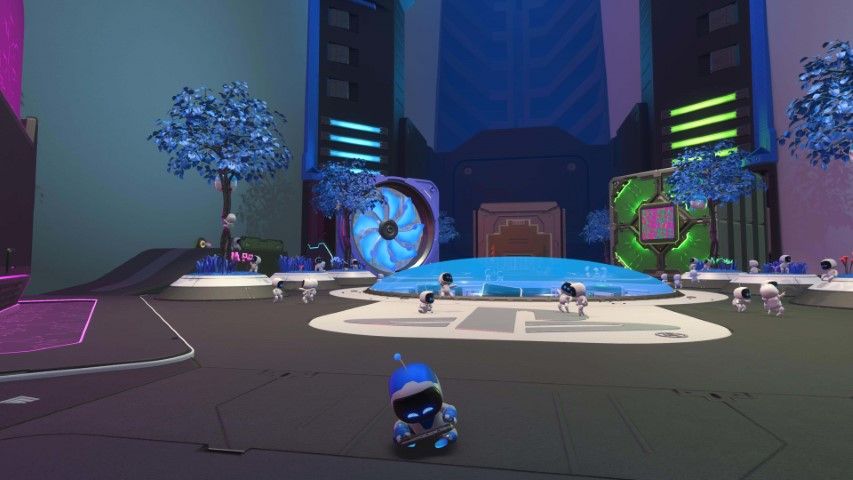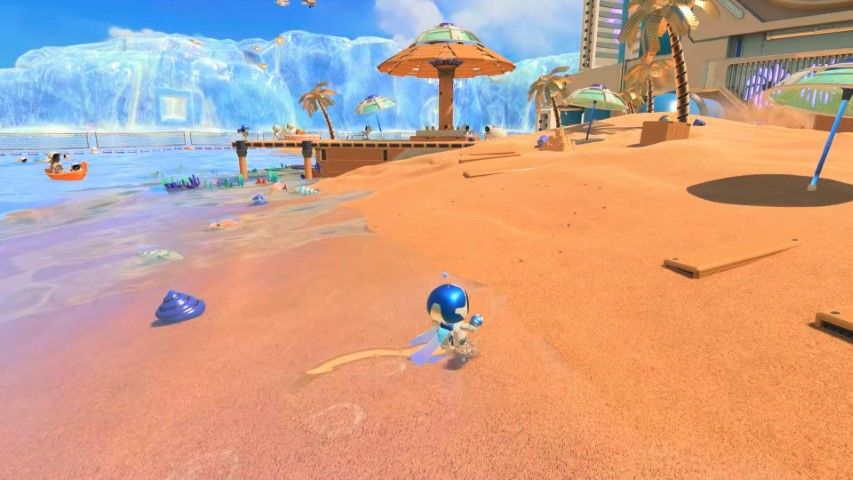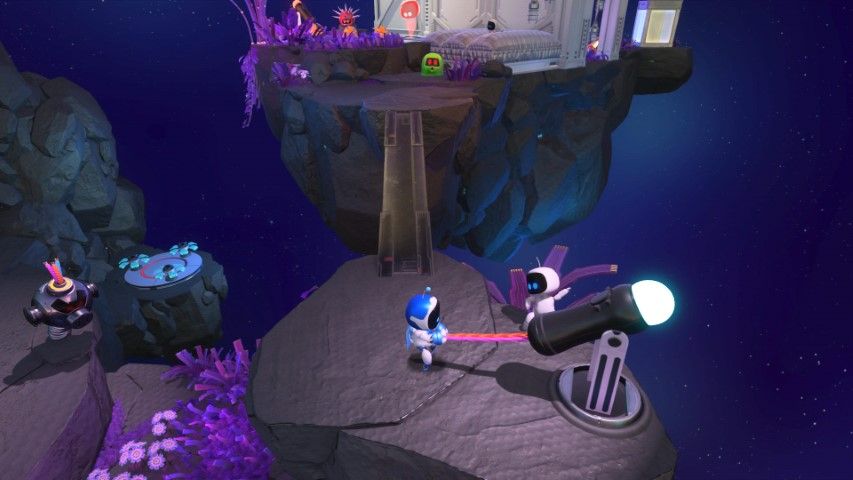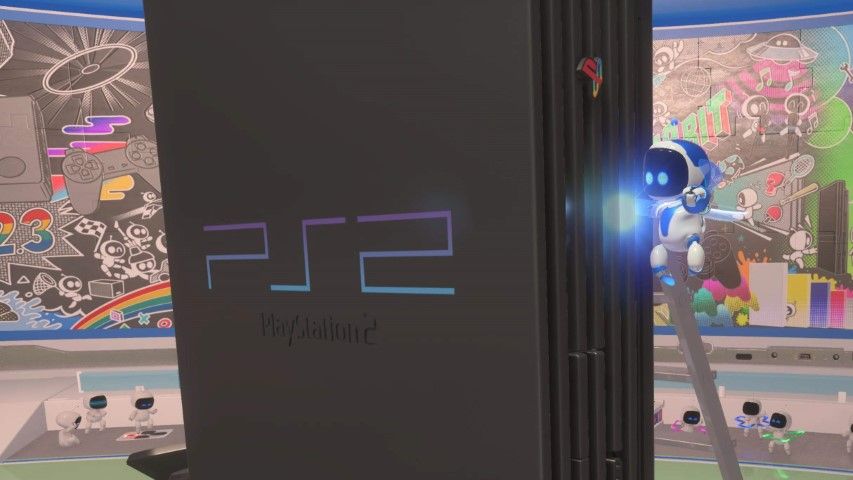Posts
Astro's Playroom Review
Astro’s Playroom utilizes the PlayStation 5 hardware in unique and revolutionary ways to create a truly next generation experience. The game maximizes two of the PS5’s most interesting hardware features: the DualSense controller and the Solid State Drive.
The DualSense is a game changer in videogame interactivity. Utilizing motors similar to the Nintendo Switch’s HD Rumble, players receive tactile feedback as they traverse through the game's varied environments. It’s hard to describe without experiencing it, but it’s almost as if you can feel texture and material of the environment through the controller. Walking on sand creates a sensation of tiny pebbles within the controller. Swimming in water simulates water caustics and wave movements. Drops of rain trickle throughout the controller at individual points. All this feels natural and is enhanced by the sound effects coming from the controller. The texture of rain, ice, metal, and many other materials come across with a sense of immediacy that when combined with the tactile feedback, creates a convincing simulation of a material environment.
The resistive triggers deserve special mention as well. Pulling back on the L2 and R2 triggers at certain moments produces resistance against the button press. The best example of this is in the spring suit that Astro utilizes in a few sections. As the player presses down on a trigger to compress the spring, the trigger "pushes back," requiring more force to be applied to pull it further back, similar to how a spring becomes harder to push down as it continues to compress
Other features like the gyroscope, accelerometer, and touchpad are integrated decently well, but nowhere near as flawlessly as the rest of the controller's features. Navigating a rolling ball with the touchpad can be imprecise and frustrating at times, while tilting the controller to navigate the spring suit and gorilla suit can be an exercise in frustration. It feels like the developers were trying to force these control options into the game, rather than building the gameplay mechanics around the hardware functionality. It comes across as clumsy rather than novel.
I've talked a lot about the technology behind the game, but is the game itself any fun? The short answer is yes.
The longer answer? While Astro's Playroom is a typical 3D platformer akin to Super Mario Odyssey, it oozes with charm celebrating the entire history of PlayStation. Collectibles encompass popular (the entire main and portable PlayStation consoles), the obscure (PocketStation), and even the meta (the PlayStation 5 and DualSense themselves). Uncovering secrets and Easter Eggs hidden throughout the varying worlds is a joy. Regardless of platform preferences, it's hard to view the game as anything less than a celebration of gaming. While it doesn't take more than around six hours to collect everything, the amount of detail and care poured into the environments and collectibles makes exploration paramount.
The various worlds are modeled and named after various hardware components of the PlayStation 5, which also reflect their functionality. CPU Plaza is the hub world that connects to everything in the game -- just like the system's main processor. GPU Jungle is full of dense vegetation within Renderforest, while Cooling Springs is permeating with the sheer amount of heat within Bot Beach, and the cooling air in Frigid Floes. SSD Speedway captures the exhilaration and speed with vehicles zipping by Astro in Turbo Trails. It's remarkable how much thought went into the design of these worlds and how it connects back to the console itself. It's almost as if Astro's Playroom is an exploration of the PS5 itself, cute robots and all.
And what ties together all these worlds is the (lack of) load times. Traveling between worlds and areas within those worlds is nearly instant. Not only does this give the game world a sense of continuity, but it also allows for the player to revisit locations in an instant. There's little friction in exploring worlds at your own pace, which makes the exploration between different worlds that much easier to instantly jump into.
There's a great sense of interactivity and feedback within objects in the game that rewards curiosity and experimentation. You can open up the PS1 disc tray (sending a poor Astrobot into the sky), pick up a physical bronze trophy, and even flip the orientation of the PS2 emblem. Almost every collectible has some sort of tangible component, and it is fun to mess around with them and see how much detail was put into every item to make it true to their real-life counterparts.
Astro's Playroom does not reinvent the platformer genre, but it's smart, unique use of the PS5 hardware features and charming design make it a celebratory triumph of the history of PlayStation. It's over before you know it, but the ride is a memorable one that will put a smile on any gamer's face. This is a must-play title for anyone with access to a PS5.
5/5
A software engineer who has a life-long obsession with videogames. Enjoys all sorts of programming and tech; also an avid coffee lover.





